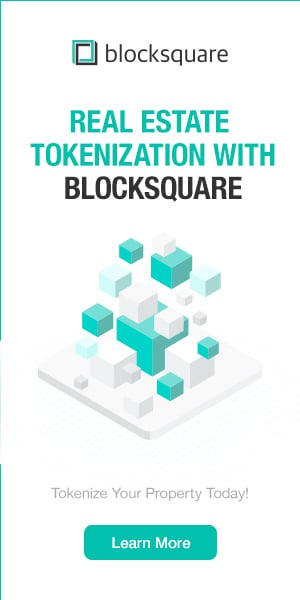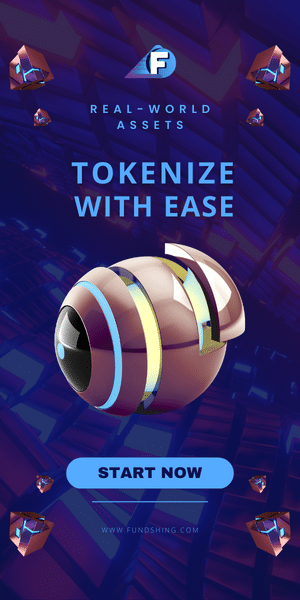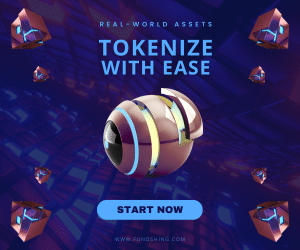This article showcases various forms of Initial Token Offering (ITO) on blockchain and compares their pros and cons.
By Yulin Liu
An ideal ITO has the following features:
- open access (e.g. low hurdle for participation)
- autonomous token offering (e.g. via trustless smart contracts)
- transparent crowdfunding (e.g. manipulation resistant)
- diverse token holders (e.g. Sybil attack proof)
Assume a hypothetical blockchain project called Wonder Woman Chain with native token denoted by WWC. The Wonder Woman Chain is Turing-complete and thus supports smart contracts/dApps.
The Wonder Woman Chain is Proof-of-Stake (PoS). That is to say, validators/miners are required to stake a certain amount of WWC tokens in the system to be able to assemble transactions, and propose and commit blocks.
The Wonder Woman Chain also has an on-chain governance system, where users stake WWC tokens to be eligible to vote on proposals (e.g. proposals on system upgrade). The voting power is proportional to the amount of staked WWC tokens and staking period. The more WWC staked and the longer the staking period, the more voting power the voter is entitled.
Validators and voters receive rewards from newly minted WWC tokens (i.e. block rewards) and gas fee paid by users.
Assume Uli Schweizer, a dApp developer, plans to deploy a dApp called Decentralized Twitter (DT) on the blockchain. Like Twitter, DT allows users to make, retweet, comment and like posts. What is different is that with DT only users with private keys could delete their own tweets. No entities, including Uli, could alter or delete others’ tweets without cracking their private keys.
Uli creates a new token called Decentralized Twitter Coin (DTC for abbreviation, patent it before Donald Trump does). Advertisers need to pay DTC tokens to post advertisements. The smart contract/dApp collects advertising revenue and allocates it to tweets. The more comments, retweets and likes a tweet receives, the more DTC token reward it is allocated. The reward accrued to the tweet is shared between Uli (10% of the reward), tweet owner (40%) and the first half of those who commented, retweeted and liked the tweet (50%).
Such a revenue model incentivizes users to post, identify and interact with high-quality tweets. Users need to pay a gas fee in WWC for operations on the Wonder Woman Chain. Gas fee prevents users from spamming the network.
DT’s economic model is quite simple. In a nutshell, advertisers pay DTC tokens for posting ads. Users pay a gas fee for using the dApp and earn rewards for posting tweets. dApp developer earns automatically a steady flow of revenue. The Wonder Woman Blockchain gains users. Win-win for all ecosystem participants.
To work out the dApp, Uli needs to raise funds to hire engineers. To do that, Uli writes up a white paper explaining his idea, posts it on social media, and announces the fundraising method and time. In the rest of the article, different forms of fundraising and token allocation on blockchain are briefly explained and compared.
Initial Coin Offering (ICO)
Uli creates 100 million DTC tokens on Wonder Woman Chain out of thin air and sells them to the public at an exchange rate of 1 WWC = 100 DTC via smart contract. Once the fundraising starts, investors could send WWC tokens to the smart contract and the smart contract sends automatically DTC tokens to investors at the aforementioned exchange rate.
Assume the market is in a bull run. Investors are optimistic of this dApp and firmly believe there will be a huge demand for DTC tokens after the launch of DT and the DTC token price will skyrocket. The 100 million DTC tokens are quickly sold out and Uli raises 1 million WWC tokens hands-down.
The ICO has several advantages. To name a few.
- Transparency: Investors could convert WWC token to DTC token at the given exchange rate. The conversion is recorded publicly on the blockchain and can be checked by anyone at any time.
- Openness: Literally, everyone can participate, unless restrictions imposed. For example, citizens and residents from certain countries might be forbidden to participate (e.g. IP address blocked) due to their strict rules on ICO.
- Speed: the fundraising lasts normally from seconds/minutes to days/weeks. Much faster than traditional methods.
- Low cost: the cost associated with the deployment of fundraising smart contracts is much lower than the tedious Initial Public Offering (IPO).
- Diversification: To assure diverse token holders, the dApp developer could set a limit of DTC tokens each address could claim.
There are of course costs associated with this newly born fundraising method. ICO is known as full of scams because raising money has never been so easy and fast. Vast easy fortune, together with regulation oversight, lures dApp developers to cash out WWC tokens right away, fly to Hawaii in luxury first-class and post a smirking face emoji on Twitter.
In addition, ICO is prone to Sybil attack. Sybil attack refers to the scenario where attackers could forge multiple identities in a peer-to-peer network. For example, an attacker could send WWC tokens to the smart contract from various addresses. By doing so, he/she owns a large share of DTC tokens, exposing DTC token price to manipulations, e.g. via pump-and-dump.
Nowadays, regulations on ICO get tightened and the hype behind ICO faded away. If Uli is able to deploy the dApp by himself, there is no need to do ICO for fundraising. To start the Decentralized Twitter with many users, Uli could airdrop DTC tokens for free. Airdrop is prone to Sybil attack as well. The attacker could make a bot to register thousands of accounts to claim the airdropped tokens.
Initial Lock Offering (ILO)
To tackle the Sybil attack, Uli could airdrop DTC tokens to the stakeholders of the Wonder Woman Chain, i.e. voters and validators who stake WWC tokens in the system. Normally, the stakeholders of a major blockchain project are more or less diverse. The amount of DTC tokens distributed to WWC stakeholders is proportional to the amount of WWC tokens they stake in the system and the staking period. Voters and validators who lock more WWC for longer period receive more DTC tokens. These airdropped DTC tokens can be either locked for a certain period or liquid right away, up to the dApp developer.
Another advantage of ILO is that the airdrop beneficiaries are WWC long-term hodlers and thus have skin in the development of the WWC ecosystem. They have less incentive to speculate the DTC token price than other users, as the speculation damages the dApp development, and thus the blockchain ecosystem and the long-run interest of the Wonder Woman Chain.
Moreover, ILO incentivizes users to stake WWC tokens in the system because stakeholders receive not only WWC block rewards and gas fee but also airdropped tokens.
ILO does not raise funds for dApp developers. Perhaps Uli could combine ICO for fundraising and ILO for diversified token distribution. Since ICO and ILO allocate tokens to anonymous investors, it is problematic as it touches regulators’ bottom line — Know Your Custom and Anti-Money Laundry (known as KYC/AML).
Initial Exchange Offering (IEO)
Uli could collaborate with crypto exchanges and sell DTC tokens to the exchange users. Since exchange users need to register with real identities, IEO is KYC/AML compliant. By restricting the max amount of tokens each user could buy, token distribution can be diversified.
IEO can be versatile as well. Uli could set vesting term and forbid users from countries with strict cryptocurrency restrictions to participate.
Moreover, token buyers are assured with the quality of the project, as the exchange would screen scam projects and back the listed tokens with their reputation. Most importantly, IEO allows Uli to take advantage of the existing user base of the exchange. Of course, IEO of the DTC token also brings new users to the exchange. Win-win for both parties.
Examples: Fetch, Celer, Matic and Harmony conducted IEO on Binance Platform in the first half of 2019. Binance users could exchange their BNB tokens for IEO tokens at a given exchange rate during the fundraising period.
Initial DEX Offering (IDO)
IEO gained momentum in early 2019. Some have argued that the bull run of 2019 was ignited by IEO. Nonetheless, it is against the spirit of blockchain: cutting out middlemen. For those lack of ability to evaluate blockchain projects, relying on exchanges is perhaps not a bad idea. They screen dubious projects for token buyers and administer the fundraising process.
The fees charged by exchanges can be very high. dApp developers need to pay service fees and coin listing fees to exchanges. The cost is ultimately undertaken by token buyers.
Apart from high fees, IEO is also susceptible to manipulations due to the lack of transparency. Exchanges could exploit the insider information advantage. There is plenty of room for sneaky actions.
Naturally, one would think of replacing the centralized exchange by the Decentralized Exchange (DEX). DEX is essentially smart contracts. The high fee and manipulation associated with IEO disappear with IDO at the cost of high-risk exposure. Token buyers need to discern promising projects from scams. In essence, IDO is not too much different from the ICO: automated token swap via smart contracts, lack of KYC/AML, prone to Sybil attack and high-risk exposure.
Simply put, IDO combines the autonomous fundraising via a smart contract with the coin listing on DEX, i.e. IDO = ICO + coin listing.
Initial Fork Offering (IFO)
Say the current design of the Wonder Woman Chain has severe bottleneck for the development of DT. Uli has proposed several system upgrades to the on-chain governance system. Sadly, most of his proposals were voted down. Uli decides to bifurcate the Wonder Woman Chain and make a Spider Man Chain with changes (e.g. different voting system, economic model and cryptographic design) that can tackle the latency and scalability issues. The native token of the Spider Man Chain is denoted by SMC.
To attract users from Wonder Woman Chain, WWC holders are entitled to the same amount (or 2x, 10x etc) of SMC tokens. That is to say, the new blockchain inherits users of Wonder Woman Chain by giving them SMC tokens for free.
IFO is controversial. Some consider it innovative while others scold it as a copycat of other blockchains’ codes from Github with unnecessary micro-adjustments. Bifurcation initiators could pre-mine a certain amount of SMC tokens and sell them after the hard fork. Critics ridicule it is just ICO in disguise.
Examples: The second half of 2017 witnessed a bunch of Bitcoin bifurcations. Bitcoin Cash, Bitcoin Gold, Bitcoin Diamond, Bitcoin Platinum, Super Bitcoin etc were forked from Bitcoin with slightly modified features (e.g. larger block size, shorter block time, privacy preservation etc).
Initial Mining Offering (IMO)
The newly forked Spider Man Chain might not attract sufficient validators to join after the bifurcation. Uli could change the protocol to allow himself and early validators/miners to pre-mine a certain amount of SMC before launch.
Uli could also offer bonus package to validators who stick to the project for longer than, say 1 year, to keep validators until the ecosystem of the Spider Man Chain grows large and resilient.
Security Token Offering (STO)
Say a few years later Decentralized Twitter gains popularity and attracts millions of daily active users. Stephanie, Uli’s friend, opens an advertisement company that helps customers design and post ads on the Decentralized Twitter. Stephanie plans to sell ownership of her company in the form of security tokens to users of the Spider Man Chain. That is, the ownership of the company is tokenized and security token holders are entitled to dividend payments just like stockholders of public companies.
In layman’s terms, security tokens are linked to assets, such as company stocks, bonds, options, real estate, gold, commodities and so on. Owners could tokenize their assets under securities laws. If we regard cryptocurrencies as programmable money, then security tokens are programmable ownership.
STO has several advantages. Security tokens offer more flexibility. For example, investors could buy a portion rather than the entire asset. Expensive real estate can be fragmented into millions of portions and security token holders receive rent payment in proportion to their holdings of security tokens. Moreover, security tokens have more liquidity. Investors could trade security tokens 24/7 on the blockchain. Due to the lower costs than the traditional IPO, STO has gained momentum in recent years. Smart-contract based STO reduces the dependence on numerous paperwork and expensive middlemen.
Token Pricing Mechanism
This section briefly presents a token pricing mechanism during the token sale via smart contracts. In the ICO section, I mentioned the dApp developer could preset the DTC token price vis a vis the WWC token. There, the exchange rate is fixed and the token sale is based on the first-come-first-served principle. Simple design but neither fair nor efficient.
First, the dApp developer needs to price the DTC token reasonably. If it is too high, the fundraising target might not be achieved. If too low, the dApp developer incurs a loss. The valuation of DTC token requires asset pricing expertise, luxury skill for most dApp developers.
Second, since most ICOs end in seconds or minutes, token buyers with slow internet access often do not get a chance. Token sale then becomes a competition of internet speed.
An alternative solution would be to leave token pricing to the invisible hand of the market via Dutch Auctions (examples: Algorand, EOS, and Gnosis). Dutch auction (descending price auction) is different from the most common English Auction (ascending price auction). Bidders raise price till the last one wins in English Auction. Dutch Auction, where the auctioneer starts at a very high price and gradually lowers the price until the bidding items are sold out, is often held for a bulk of perishable goods, e.g. flowers. Bidders are ordered according to their bidding prices. The highest bidder picks first, followed by other bidders in descending order.
Dutch Auction incentivizes bidders to call out their bids earlier at higher prices so they could pick first. As most tokens offered for sale are fungible/interchangeable (non-fungible tokens are mostly crypto collectables, e.g. crypto kitty), bidders with high bidding prices do not benefit from picking first. Thus, the Dutch Auction is slightly modified for fungible token offering on the blockchain. Instead of paying their bidding prices, bidders all pay the same price, the lowest bidding price. In the following, I demonstrate how it works.
If Uli intends to sell 100 million DTC tokens and sets the initial price at 10 DTC tokens per WWC token.
- Auction starts at 10 DTC/WWC.
- Investors happy with this exchange rate could send WWC tokens to the smart contract.
- Assume 1 million WWC tokens received at this exchange rate (equivalent to 10 million DTC tokens due to investors).
- Since it is less than the target of 100 million, the smart contract automatically lowers the exchange rate to 11 DTC token per WWC token.
- Assume some investors are satisfied with this new price and another 1 million WWC tokens received by the smart contract.
- So far in total, 2 million WWC received and 22 million DTC tokens are due to investors.
- Since it is still less than the 100 million target, the smart contract repeats steps 4–6 until the price is low enough to sell all the 100 million DTC tokens.
- This last price is the final clearing price and every bidder who bid no lower than this price is charged at this final price. DTC tokens are automatically sent to their wallets.
Disclaimer: The views expressed in this article are those of the author and do not necessarily reflect the official position of the DFINITY Foundation.
Yulin Liu ([email protected]) currently leads research on token economics and governance system at DFINITY. He also serves as Affiliated Economics Professor at Huazhong University of Science and Technology.
Yulin specialises in monetary theory, bank supervision, cryptocurrency, token economics and blockchain governance system. He holds a Master of Science in Quantum Computation and a PhD in Economics from ETH Zurich. Yulin was a visiting scholar at the European System of Central Banks and has been invited for talks at major central banks and conferences worldwide.
Photo by Pawel Janiak on Unsplash
More Articles:
EV Biologics Signs Funding Agreement for Biotech Security Token Offering
Total Network Services Corp. Closes Series A Security Token Offering
You Might also Like
























